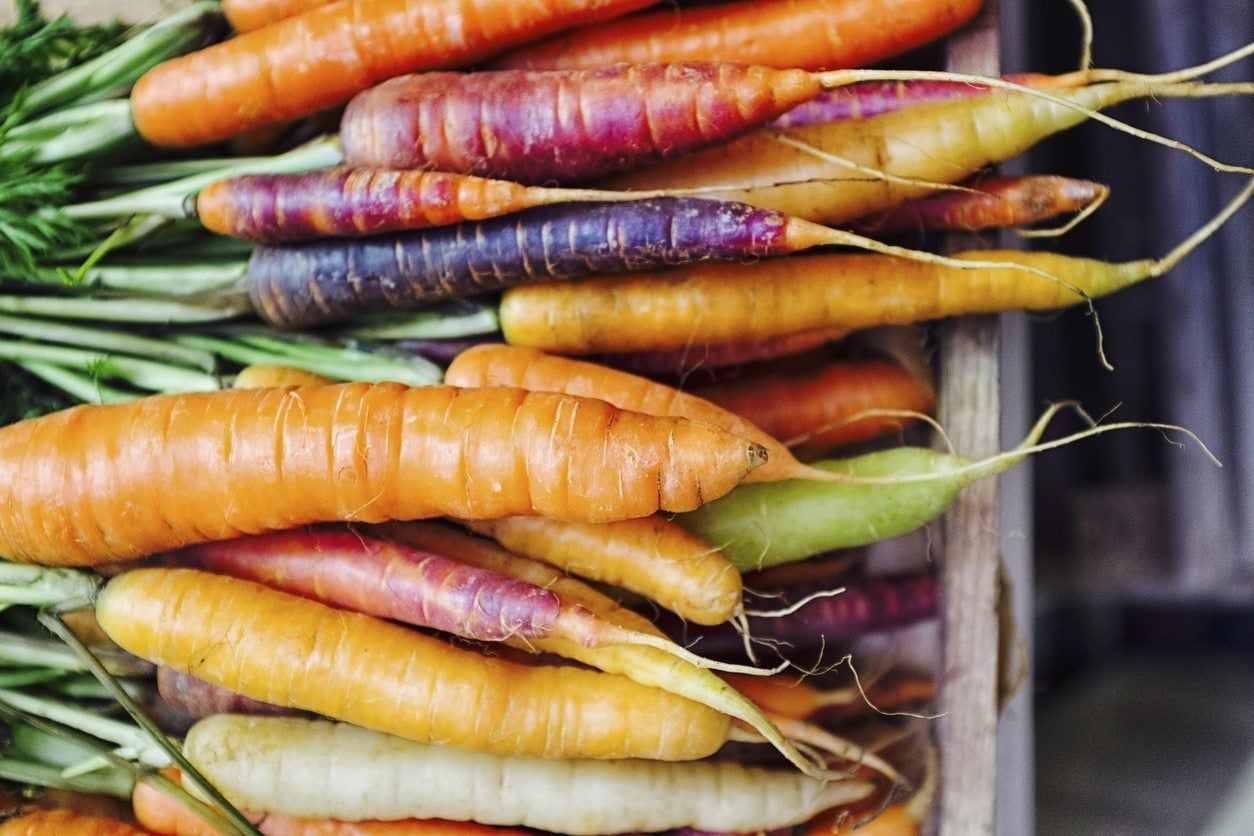Vitamin A Veggies: Learn About Vegetables High In Vitamin A


Vitamin A occurs naturally in foods. There are two types of Vitamin A. Preformed Vitamin A is found in meats and dairy, while provitamin A is in fruits and vegetables. Vitamin A in vegetables is readily available, and easy for the body to access, while most of the meats that carry it are high in cholesterol. Eating the right vegetables for Vitamin A is easy when you know what types have a high amount of the vitamin.
Why Do We Need Vitamin A?
Eating healthy can be a challenge. Many packaged foods contain excess sugar, salt and fat which we are told to avoid. Staying with a plant based diet helps eliminate these concerns, but you still want to make sure you are getting a balance of nutrients. Fortunately, there is a host of vegetables rich in Vitamin A. Vitamin A veggies have certain characteristics, too, to help you identify them. Vitamin A veggies are essential for a strong immune system, good vision, certain organ function and the reproductive system. Liver and fish oil have the highest amount of preformed A, but eggs and milk also have some. Vitamin A rich foods also help the heart, kidneys and liver function properly. Provitamin A is found in leafy green vegetables, fruits and some other vegetables. Vegetables high in Vitamin A usually have a large concentration of beta-carotene. You can get Vitamin A supplements, but foods that contain the vitamin are easiest for the body to access while gathering other important nutrients.
Vegetables for Vitamin A
A plant based diet provides Vitamin A while offering low fat nutrition. Green leafy vegetables combined with other green, orange and red veggies provide natural sources of the vitamin. The highest concentrations are found in greens like:
In the category of non-leafy veggies, broccoli is also loaded with Vitamin A. Foods like carrots, sweet potatoes, and red or orange sweet peppers are all vegetables high in Vitamin A. The rule of thumb with Vitamin A rich foods is to think colorful. The brighter the vegetable or fruit, the better chance it is loaded with Vitamin A. Asparagus, okra, and celery are considered good sources of Vitamin A with under 1,000 IU provided per serving.
How Much Vitamin A Do You Need?
Creating menus that have colorful or green leafy vegetables with other foods high in Vitamin A such as tuna, sturgeon or oysters ensures a complete daily dose of Vitamin A. Where such eating plans are followed, it is rare for Vitamin A deficiency to occur. The amount needed daily depends upon age and sex. Women need more when they are pregnant and lactating. The average in retinol activity equivalents is 900 for adult men and 700 for adult women. The Daily Value has been established at 5,000 IU for adults and children above the age of 4. This should be accomplished by a varied diet filled with an assortment of vegetables rich in Vitamin A as well as protein sources of the vitamin.
Gardening tips, videos, info and more delivered right to your inbox!
Sign up for the Gardening Know How newsletter today and receive a free copy of our e-book "How to Grow Delicious Tomatoes".

Bonnie Grant is a professional landscaper with a Certification in Urban Gardening. She has been gardening and writing for 15 years. A former professional chef, she has a passion for edible landscaping.
-
 12 Lush Alternatives To A Lawn For Sustainable Spaces
12 Lush Alternatives To A Lawn For Sustainable SpacesAlternatives to a lawn are beautiful and also beneficial to your local ecosystem and its pollinators. Explore our top picks for plants to replace grass.
By Tonya Barnett
-
 Types Of Tomatoes Explained: Explore The Many Wonderful Shapes, Colors, Flavors, & Best Uses
Types Of Tomatoes Explained: Explore The Many Wonderful Shapes, Colors, Flavors, & Best UsesThe world of tomato varieties is vast and fascinating. Learn about the key types to grow in your garden, tailored to your preferences and space.
By Amy Grant
-
 How Many Vegetables To Plant Per Person For A Year
How Many Vegetables To Plant Per Person For A YearGauging how much to plant in a vegetable garden can eliminate waste while still producing enough for your family. Click for more.
By Bonnie L. Grant
-
 13 Perennial Fruits And Vegetables You Only Have To Plant Once
13 Perennial Fruits And Vegetables You Only Have To Plant OnceLooking to set it and forget it? Find out which fruits and vegetables can be grown as perennials.
By Laura Miller
-
 11 Edible Plants For A Year-Round Garden In A Bucket
11 Edible Plants For A Year-Round Garden In A BucketWant to know how to grow food inside your house and which foods do best indoors? Click here to learn all about it.
By Bonnie L. Grant
-
 Frost Tolerance Of Vegetables From Least To Most Hardy
Frost Tolerance Of Vegetables From Least To Most HardyHow cold can vegetables tolerate? Knowing which veggies will survive frosts and freezes is essential for the success of your garden. Click here for more.
By Laura Miller
-
 Best Vegetables To Pickle Straight From The Garden
Best Vegetables To Pickle Straight From The GardenPickles aren’t limited to just cucumbers. Read on for tips on pickling your fresh veggies.
By Amy Grant
-
 Benefits Of Planting In Fall Vs. Spring Vegetable Plots
Benefits Of Planting In Fall Vs. Spring Vegetable PlotsLearn why some vegetables do better if you plant them in fall instead of spring.
By Laura Miller
-
 Interplanting Vegetables In The Fall Garden
Interplanting Vegetables In The Fall GardenLearn all about the benefits of interplanting vegetables for your fall garden.
By Laura Miller
-
 Best Vegetables For Growing In Perlite
Best Vegetables For Growing In PerlitePerlite is a natural growing medium that comes from super-heated volcanic glass. In some cases, it works better than soil. Read on for more info.
By Laura Miller